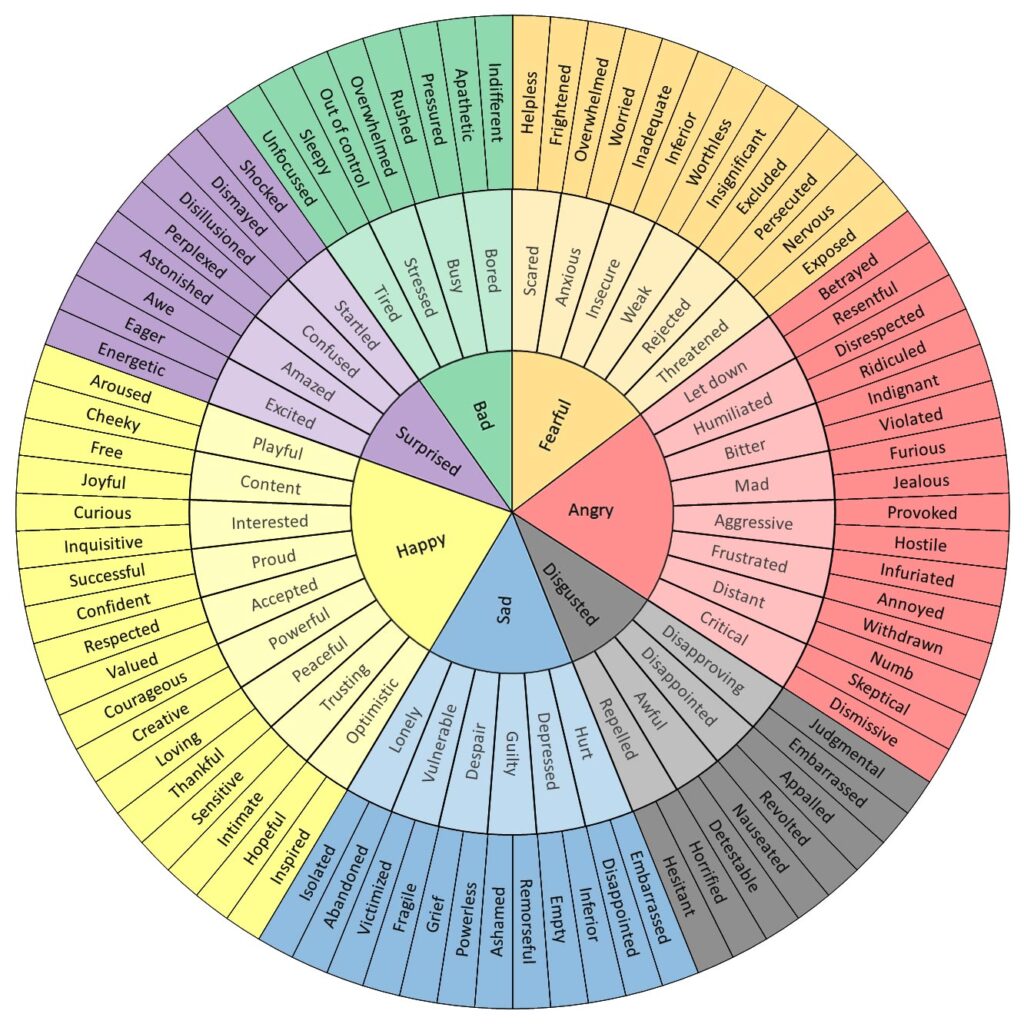I’ve worked with many organizations and groups over the years to determine and resolve challenges…

The Value of Emotions at Work
Some people think emotions should stay out of the workplace. I think we are not robots. We come to the workplace as a whole person with complicated needs, including our hopes, concerns, beliefs and expectations. In fact, knowing these needs for ourselves and others is the key to negotiation and conflict resolution.
Feelings and emotions are different and often described as two sides to the same coin. Emotions are the physical reaction in your body and feelings reflect your personal associations to these emotions. .
Many of us do not have the language when it comes to emotions and feelings. I want to share here the feeling wheel which may be helpful for you to articulate what you or others may be experiencing. You can also download it at www.feelingswheel.com. Acknowledging emotions for yourself and others helps to deescalate heightened situations. ‘It sounds like you feel humiliated when Joe corrects you in meetings in front of your peers.’
Recognizing emotions and feelings is one of the most significant tools we have when resolving conflict. Those emotions and feelings point directly to the underlying need at the heart of any conflict. When emotions arise, we should see it as a gift. It is where our focus and energy should go and can help to focus our open questions. Feelings are the loudest indicator of those underlying needs that we may be missing. Once we identify the need, vocalize it, and dig deeper into it, we can build understanding. ‘Its important to you that you feel and are seen as competent in the work that you do.’
Understanding, not agreement is the crux of conflict resolution. Once both parties can be heard,
acknowledged and understood they are ready to look at options that will meet both parties needs. Thereby driving a solution (not agreement).

I thought it would be helpful to share this table of feelings/needs that I came across not long ago. Thanks to Gary Harper, author of ‘The Joy of Conflict Resolution’, for sharing his information. It shows the feeling on the left and the associated underlying need on the right.
Use it the next time you see emotions rise to ensure you can identify the need and explore it further. When someone is feeling micromanaged you can say “Oh, you are looking for more autonomy in your work. What’s important to you about autonomy?”. This acknowledgement and question will create a very different dynamic than if you reacted strongly to the concern about your management style.
Whether its your own feelings or feelings that others are exhibiting (sometimes with strong emotion), hopefully you will see emotions and feelings as the valuable gift they are.
“When dealing with people, remember you are not dealing with creatures of logic, but with creatures of emotion.” -Dale Carnegie

Receive The Conflict Toolbox Series
The conflict toolbox series is a series of four emails with each one including a tool for your conflict resolution toolbox. After we send you the four tools, we will send you our monthly newsletter. We will always ask before sending anything else!




